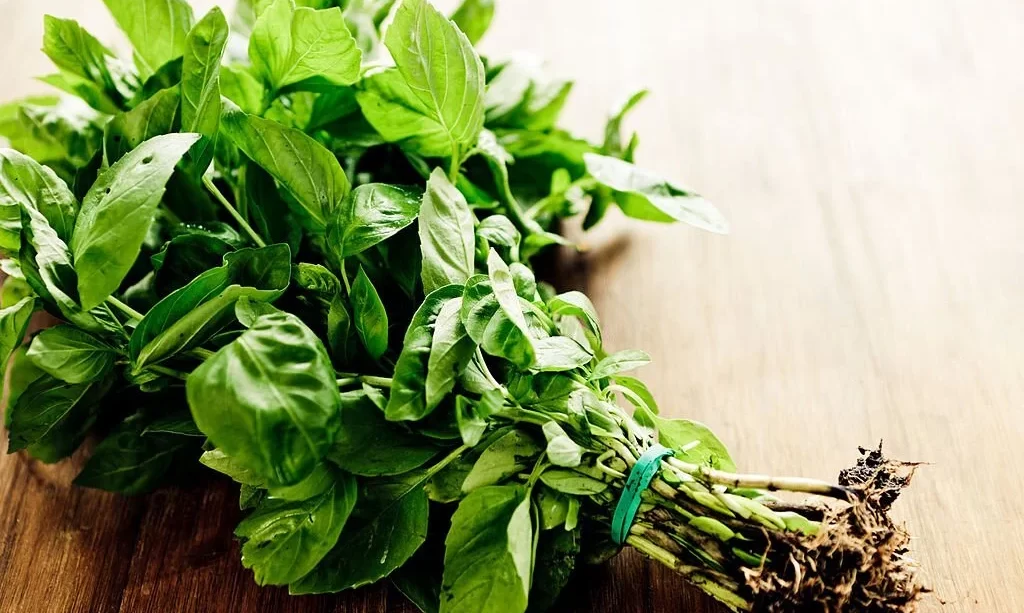In the world of culinary delights, herbs and spices play a pivotal role in transforming ordinary dishes into extraordinary culinary creations. Two such ingredients that frequently grace our kitchens are basil and bay leaves. These aromatic elements are renowned for their distinct flavors and fragrances, but are they the same? In this exploration, we delve into the intriguing world of basil and bay leaves to unravel their unique characteristics, culinary uses, and the key differences that set them apart. Are these kitchen staples interchangeable, or do they each bring their own distinctive charm to the table? Let’s find out.
- Large leaves with intense flavor & a wonderful aroma
- Garden use: Containers, herb beds, flower beds
- Culinary use: Italian & Asian dishes
- Plant in full sun for the best yields
- Plant after last spring frost
Basil – A Versatile Herb
Let’s start by acquainting ourselves with basil, a versatile herb that has left an indelible mark on cuisines around the globe. Basil, scientifically known as Ocimum basilicum, comes in various varieties, with sweet basil and Thai basil being some of the most well-known. Visually, basil is recognized by its vibrant, bright green leaves that emit a delightful aroma. Its taste is equally captivating, offering a sweet and slightly peppery flavor profile that can elevate a variety of dishes. From Mediterranean classics to Italian favorites and Thai curries, basil’s adaptability in the culinary world is truly remarkable.
Bay Leaves – A Fragrant Spice
Now, let’s turn our attention to bay leaves, a fragrant spice that imparts a unique character to numerous dishes. Scientifically termed Laurus nobilis, bay leaves are easily distinguishable by their elongated, dark green, glossy appearance. What sets bay leaves apart is their captivating aroma and flavor, described as woodsy, slightly sweet, and savory. While basil is often celebrated for its freshness, bay leaves are prized for their ability to infuse rich, complex notes into dishes. You’ll frequently find them nestled in simmering soups, hearty stews, flavorful sauces, and slow-cooked braises, where their contribution to flavor is truly exceptional.
Differences Between Basil and Bay Leaves
As we explore the distinctions between basil and bay leaves, several key factors come to light:
- Flavor: Basil offers a sweet and slightly peppery taste with fresh herbal notes, making it a perfect complement to salads, pasta dishes, and pizza. In contrast, bay leaves contribute a more complex, earthy flavor with hints of woodiness and mild sweetness. This flavor profile enhances soups, stews, and sauces, adding depth and aroma.
- Appearance: Basil boasts bright green leaves that are soft and pliable, often used fresh as a garnish or in various culinary applications. Bay leaves, on the other hand, have dark green, elongated, and glossy leaves that are typically used in dried form to infuse flavor into slow-cooked dishes.
- Culinary Uses: Basil’s versatility shines through as it finds its way into salads, sandwiches, pesto, and as a flavorful topping on pizzas. Fresh or dried, basil’s fragrant leaves are a kitchen staple. Bay leaves, conversely, are rarely used fresh but are favored for their dried form. They excel in slow-cooked or simmered recipes, lending their unique flavor to soups, stews, and braised dishes.
- Origins: Basil has its roots in Asia and Africa and has become an integral part of Mediterranean, Italian, and Thai cuisines. Bay leaves, on the other hand, hail from the Mediterranean region and have been cherished for centuries as a culinary treasure.
- Plant Types: Basil is an herbaceous plant with lush leaves that are directly harvested for culinary use. Bay leaves, in contrast, are derived from the evergreen bay laurel tree, where the leaves are carefully dried before being utilized in cooking.
Culinary Uses of Basil and Bay Leaves
The culinary applications of basil and bay leaves are as diverse as their flavors:
- Basil: Fresh basil leaves are celebrated for their role in salads, caprese dishes, sandwiches, and as a fundamental ingredient in the creation of pesto sauce. Dried basil finds its place in pasta sauces, soups, and as a seasoning for various dishes.
- Bay Leaves: Bay leaves shine in their dried form, primarily appearing in simmering dishes where they release their unique aroma and flavor. Soups, stews, sauces, and braised dishes benefit from the addition of bay leaves, providing a rich, aromatic dimension to the culinary experience.
Conclusion
In the delightful realm of culinary exploration, basil and bay leaves occupy distinct niches, each contributing its own unique charm to the world of flavors and aromas. While basil’s fresh, sweet notes enhance a plethora of dishes, bay leaves bring a depth of complexity to slow-cooked creations. As we unravel the culinary mysteries of these two culinary heroes, it becomes abundantly clear that they are not interchangeable, but rather, they are complementary ingredients that, when used thoughtfully, elevate dishes to extraordinary heights. Embracing the versatility of basil and the fragrant allure of bay leaves ensures a world of delectable possibilities in our kitchens.





